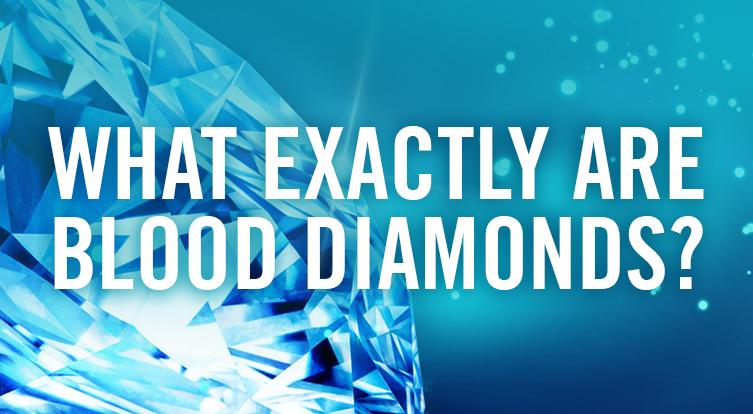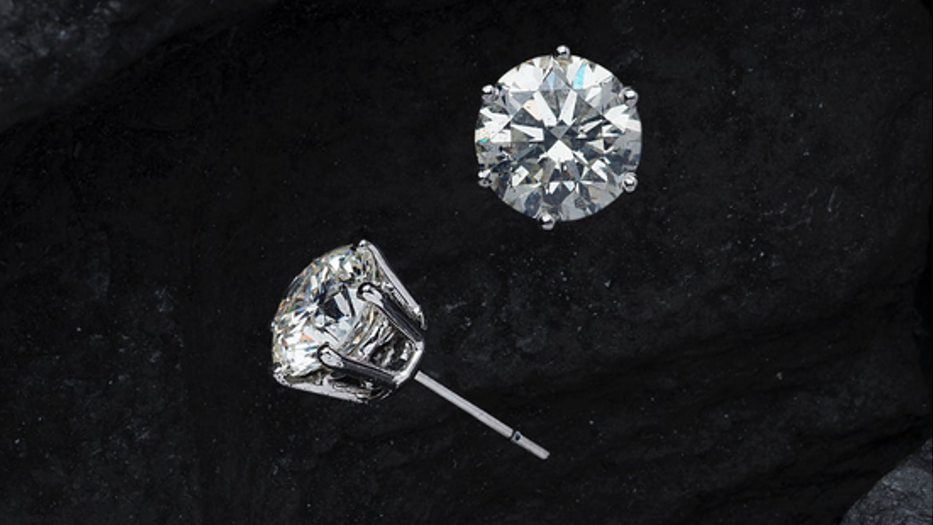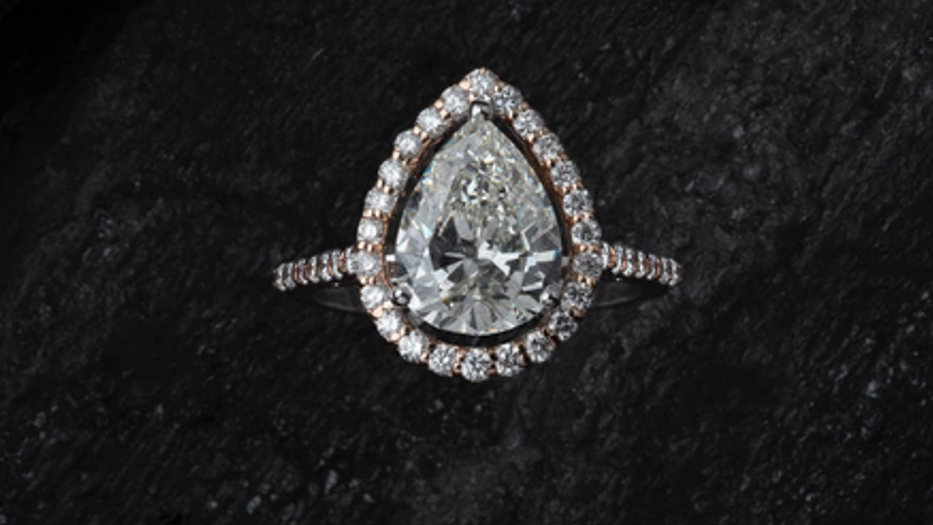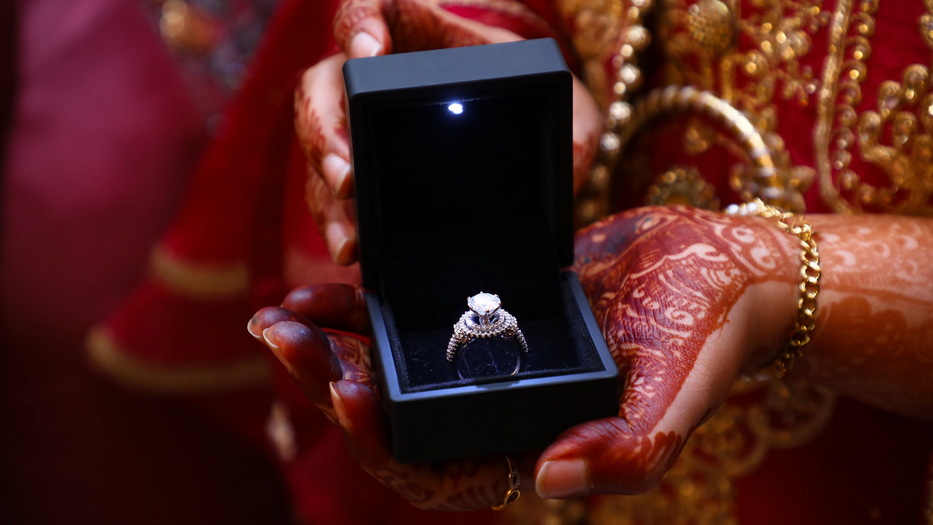What Exactly are Blood Diamonds?

You've probably heard the words 'blood diamond' tossed around a fair bit in popular media. What exactly are blood diamonds and why does it seem to be such a dirty word? The most important section of this article will come at the end where we will detail how to avoid buying blood diamonds. The diamonds are problematic and their name is quite well earned, so let's have a frank discussion all about why.
Caring for Diamonds
Diamonds should be maintained regularly. If they are sourced ethically then take the best possible care of them. The more diamonds bought the more room there is in the market for blood diamonds to slip in. When caring for diamonds I absolutely love keeping that shine with Simple Shine's diamond shine stick! If you need more than a quick touch-up then you can get the deepest possible clean with our amazing ultrasonic jewelry cleaner kit!

Names for Blood Diamonds
Now, some people find the name 'blood diamond' to be far too evocative. I think that is a good thing since it paints a picture of the actual story of how they came to market but there are a plethora of alternative names. You'll want to avoid all of these at market of course. Blood diamonds are sometimes called conflict diamonds, hot diamonds, red diamonds, or brown diamonds.
Diamonds can be red or brown, so you'll want to ask if the seller is actually talking about the color before accusing them of financially supporting something terrible. The most common name I've seen these diamonds called are 'conflict diamonds'. It's a somewhat accurate name, but it does a big disservice and makes the diamonds seem them came from a pub brawl rather than a country-wide civil war fought by child soldiers.
Why Are They Called Blood Diamonds?
Alright, this is the ugly part of the article. We are going to talk about some things that some readers might find objectionable, but pretending that it isn't going on helps no one. Blood diamonds are used to finance some of the most deplorable things in the world. These diamonds are mined in war zones and used to finance terrorism, insurgency, invasions, or warlord activities.
Obviously these actions lead to bloodshed and bestow the very fitting name. It's easy to disconnect and celebrate the fact that you're getting diamonds so cheap, but you should be mindful of the huge amounts of strife caused by these seemingly simple actions. Each blood diamond purchased can be used to finance hundreds of deaths, and as I mentioned earlier these wars are largely fought by child soldiers.

Where Do They Come From?
There are multiple countries that mine conflict diamonds, and you'll want to be extremely wary when purchasing diamonds from any of the following countries. Sierra Leone, Congo, Zimbabwe, Angola, Congo, Liberia, and the Ivory Coast. Most of these countries have experienced some sort of government coup and remain locked in a civil war. Some of these countries are managing to stabilize, but that doesn't mean it's a good idea to buy without knowing the exact origin of the diamonds.
Discovery and Prevention
Global Witness was one of the first organizations to bring the plight of blood diamonds into the public eye. They published a report in 1998 titled "A Rough Trade". Shortly after this revelation the United Nations passed security council resolutions 1173 in 1998 and 1295 in 2000. This prompted the diamond producing countries in Africa to hold a meeting in Kimberley, South Africa.
During this meeting the leadership of these countries planned a variety of methods to halt the trade of blood diamonds, and ensure diamond buyers that their diamonds had not contributed to violence. The resolution states their arrangements will "allow increased transparency and accountability in the control of diamonds from their point of origin to the bourses."

Kimberley Process Certification
In July of 2000 the World Diamond Congress created a resolution that would strengthen the diamond industry's ability to block sales of all conflict diamonds. This resolution created an international certification system that would create stringent measures which allowed diamonds to be tracked from the source to their final destination. Any persons or nations caught trafficking in blood diamonds would be subject to criminal charges.
The Kimberley Process started with South Africa as leader and Canada as vice president, and since then a new pair of leaders has been appointed annually to maintain the legitimacy of their practices. Kimberley members aren't allowed to trade with non-members, and before a diamond is allowed through an airport it needs to be presented along with the Kimberley Certification.
This process has allowed much of the world to staunch the flow of blood diamonds globally. When enacted properly it goes a long way in stabilizing fragile countries and supporting their development. This has vastly increased the income of poorer governments. Over $125 million worth of diamonds were legally exported from Sierra Leone in 2006, compared to almost none at the end of the 1990s.
Shortcomings and Criticism
The Kimberly Process has failed to completely end the flow of blood diamonds into countries around the world. Key proponents such as Global Witness have since abandoned the process. There is no 100% guarantee that Kimberley diamonds are completely conflict-free because of the corrupt nature of government officials in leading diamond producing companies.
The Kimberley system has attempted to increase government transparency by forcing them t o keep records of imports and exports. In theory, this would easily display finances and hold them accountable for the amount being spent on the betterment of their country. This isn't always the case unfortunately. While the process isn't perfect, it certainly goes a long way in at least helping to ease the mind.
Sample Block Quote
Praesent vestibulum congue tellus at fringilla. Curabitur vitae semper sem, eu convallis est. Cras felis nunc commodo loremous convallis vitae interdum non nisl. Maecenas ac est sit amet augue pharetra convallis nec danos.
Sample Paragraph Text
Praesent vestibulum congue tellus at fringilla. Curabitur vitae semper sem, eu convallis est. Cras felis nunc commodo eu convallis vitae interdum non nisl. Maecenas ac est sit amet augue pharetra convallis nec danos dui.
Cras suscipit quam et turpis eleifend vitae malesuada magna congue. Damus id ullamcorper neque. Sed vitae mi a mi pretium aliquet ac sed elitos. Pellentesque nulla eros accumsan quis justo at tincidunt lobortis denimes loremous. Suspendisse vestibulum lectus in lectus volutpat, ut dapibus purus pulvinar. Vestibulum sit amet auctor ipsum.

